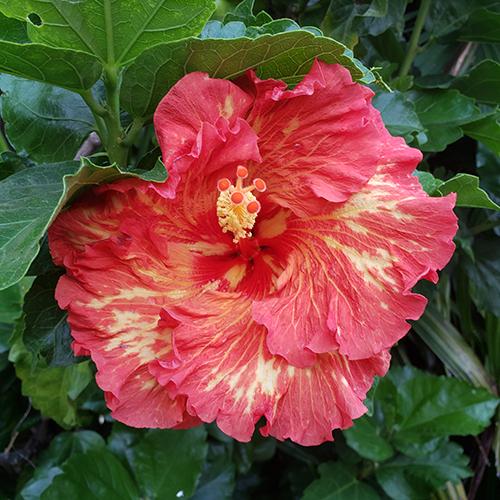
Benefits of Hibiscus
Hibiscus helped save our puppy We found a pedigree Golden retriever for sale for $50 in the local paper. At the time, they were selling
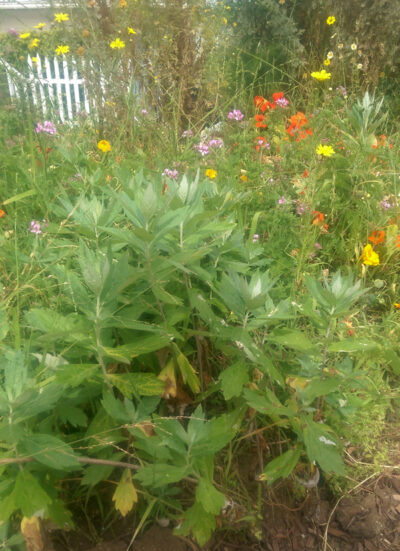
Whether you live in an apartment with little or no dirt to play in or have acres to manage, a great deal of joy and beauty can be brought into your living space by planting and growing herbs. With a little knowledge, some planning, and a bit of effort, we can surround ourselves with plants that disperse exotic scents into the air, attract hummingbirds and butterflies, and provide color and texture to our landscape, while supplying material for our favorite teas, potpourris, spice cabinets and medicine chests.
Some folks like a neat and tidy garden with measured beds and maintained paths. Others prefer to let the herbs run where they will, as they do in the wild. Either way, they can be enjoyed for their beauty and harvested for their many benefits. The great thing about growing herbs is that however you proceed, you’ll probably succeed.
Since San Diego has such a temperate climate, most things do well here. One major consideration here is the rainfall pattern. It doesn’t rain for months on end. If you wish to have your garden survive this dry spell, you need to have a watering strategy, or simply plant drought tolerant native plants. Although this limits your selection somewhat, it provides a fairly maintenance-free garden.
Xeriscaping is the practice of landscaping with drought-tolerant plants. Xeric plants need minimal water and care once established. This practice has spread beyond just the Southwest and many low-water perennials will thrive nationwide.
Native plants provide other benefits as well:
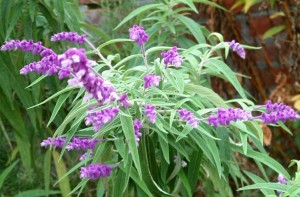
One of my favorite native plants is Mexican Sage (Salvia leucantha). It’s beautiful and attracts hummingbirds. There are some other great sages such as black sage (Salvia mellifera) ,white sage (Salvia apiana) and Cleveland sage (Salvia clevelandii). We got a lot of comments on our Jerusalem sage (Phlomis fruticosa) with its lovely yellow flowers. Although not a true sage, it’s a common ornamental shrub.
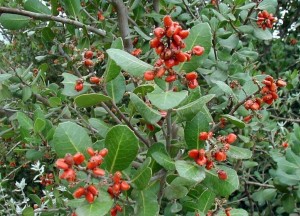
The local lemonade berry (Rhus integrifolia), is another favorite. It’s not only drought tolerant, but fire retardant as well. I’ve seen where it has stopped fires in San Diego canyons dead in their tracks, without killing the Rhus. When it fruits, you can suck on the seeds and enjoy their wonderfully sour taste. This might be a plant to consider if you live at the edge of a canyon or somewhere else where the threat of fire exists and you want to establish defensible space.
Whether you choose natives or exotics, any good garden soil will support herbs. A soil pH of neutral to slightly alkaline is usually best. San Diego soil tends to be a bit hard and sometimes sandy. All soils can be amended by the addition of organic compost, which you can make, or purchase. Compost will adjust the pH, as well as improving drainage and nutrient exchange. It usually helps to prepare the site by digging compost in at least 18 inches deep.
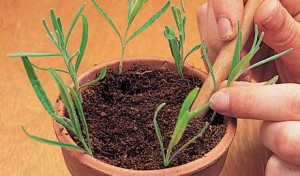
You can obtain your little herb plants from nurseries, botanical gardens or herb shops. Many may be transplanted or cloned from local populations. Cloning is the practice of propagating perennials from cuttings. If you attempt this, watering with a tea made from willow bark will improve your chances of success. Willow contains a rooting hormone that will stimulate new root growth.
Most herbs do well in full sun and require at least six hours daily. Get the appropriate info on the plants you choose and try to give them what they require. You can plant them so that the adult leaves just touch, creating a living canopy to provide shade to the surrounding earth, limiting evaporation and retarding weed growth.
After planting, compost or organic fertilizer may be mixed into the surface layer occasionally with a hoe or trowel. Weeding and mulching will give your developing plants a chance to establish themselves. Occasional watering is usually sufficient, but many herbs will flourish if watered daily.
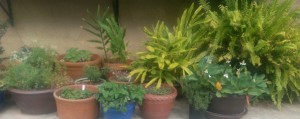
Herbs are like weeds. Once established, they’re persistent. In fact, many are harder to eradicate, once established, than to maintain. Even in pots, they will brighten our lives and enrich our stews.
For online help with growing your herbs, search for herb gardening.
Teaching comprehensive holistic education since 1985.
We are currently offering interactive hybrid courses including Herbal Fundamentals, Energy Healing, Aromatherapy and Clinical Herbology
Hybrid means you may choose to participate in each individual class in the hybrid course online or in person.
All of our products are made with love from organic, all-natural and ethically sourced ingredients.
We began making and perfecting our own herbal remedies more than thirty years ago and offer our favorite products for purchase.

Hibiscus helped save our puppy We found a pedigree Golden retriever for sale for $50 in the local paper. At the time, they were selling
Hawthorn Berry Hawthorn is known as the heart herb for its many benefits as a heart tonic. The berry has been a key part of
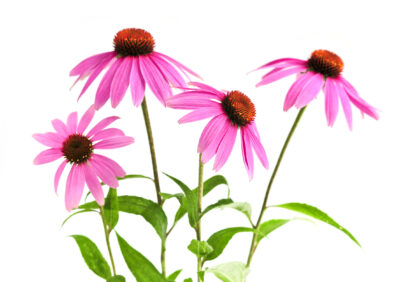
Can you take herbal supplements to arm your immune system? You probably know that zinc, vitamin D and vitamin C are gotta-have-its. How about herbal

While attending San Diego State College in the early seventies, my work-study job was in the vivarium, a room for keeping and raising animals for